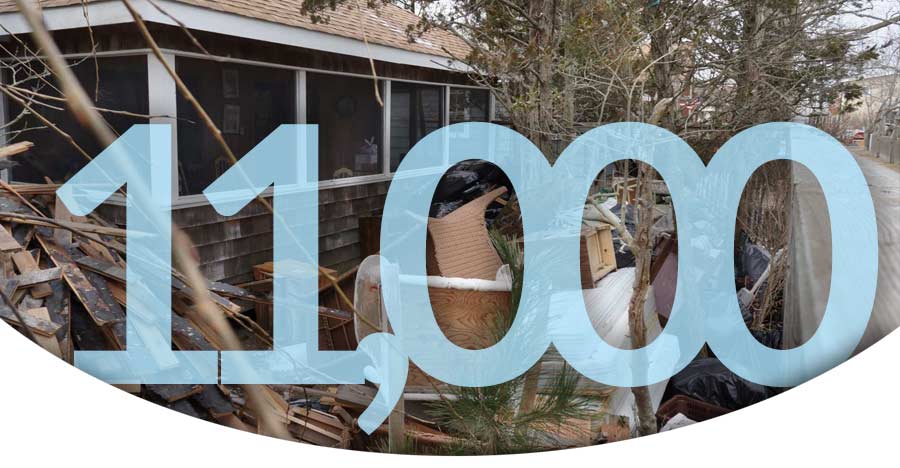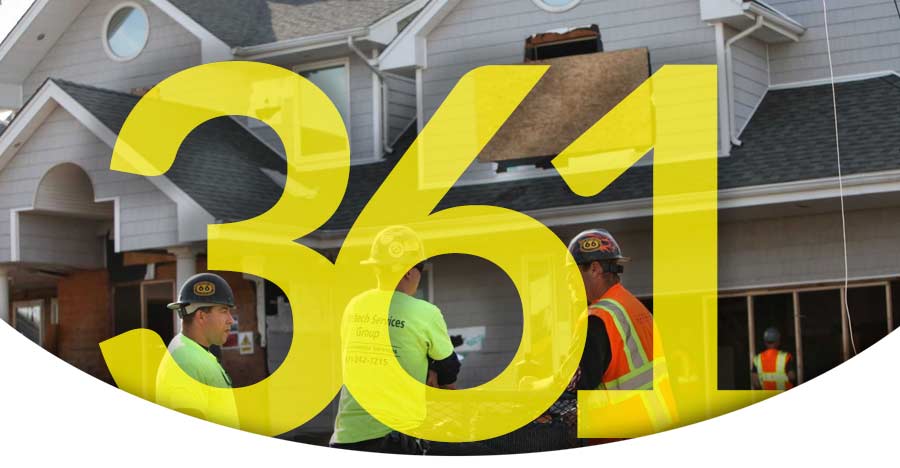What’s it like to uproot yourself, your family, and move to a country where you might not know the language or way of life and rebuild your life from scratch? Terrifying and exhilarating.
Long Island is home to many who took on these challenges and traveled from countries such as Haiti, Zimbabwe and Russia to pursue a better life in America.
Of the 2.8 million residents in Nassau and Suffolk counties, nearly one in five –18 percent– is born in another country, according to the U.S. Census.
Some of these Long Islanders shared with us their stories of the obstacles they faced, the struggle to hold onto their traditions and how they achieved their version of the American dream.
I had nothing on me, but I had my family here.
Jasdeep Singh, 40
From India to Lindenhurst
Leaving home
Jasdeep Singh left Punjab, India, in 2003 to join his parents and two siblings who were all living in Glen Cove. The 18-hour flight was the first time he’d been on a plane. Although his family enjoyed a comfortable life in India, they had immigrated to the United States in 1999 to seek more opportunities. Singh remained in India and lived with his grandparents while he completed his MBA.
The only thing Singh brought with him was one big “cheap” suitcase full of clothes, he said. “I could only travel once with it, then throw it out.”
He even left behind his beloved cricket bat.
“I had nothing on me [other than a suitcase], but I had my family here.”
Singh said he was struck by how pristine New York seemed compared to India. “When I came here, everything was in like HD; everything was so clean,” he said.
He entered the country on an H-1B visa. Employers use this visa to hire people from outside the country with in-demand skills. Soon after arriving he landed a job in the mortgage industry, but he lost the position after the housing market crashed. Singh was then able to find a new job as an IT manager in wireless retail.
A new home
As a member of the Sikh faith, Singh wears a turban to protect his head and hair, encourage harmony among others and preserve the Sikh religion.
“The turban is not an accessory…You wear your turban proudly. When someone sees he or she with a turban, they can go to you for help or protection.”
He said he only once faced discrimination because of his headgear — during a business trip.
He traveled to Illinois in 2009 to help set up a store for Sprint. A customer walked in and greeted everyone, then turned to Singh and said: “Hey, I know you. You’re one of those guys right? One of those Osama guys, right?”
Singh said he could have reacted with anger, but decided instead to make it a teachable moment. Singh explained what Sikhism was, and the man eventually apologized and thanked him, Singh said.
It was the one time he felt he didn’t belong in America.
Today, Singh, 40, works as the director of retail operations for a national wireless retailer on Long Island. He said he shares a “blessed and comfortable life” in Lindenhurst with his wife, Gurjeet, 39, and two sons, Teghvir, 9, and Fateh, 4.
Singh now holds a green card, which allows foreign individuals to live and work in the United States. He said he’s achieved his idea of the American dream by supporting his family, owning a home and helping others. He attributes this success to the three tenets of the Sikh faith.
“Our first guru, Guru Nanak, he gave us three golden principles. ‘Naam Japna’ means remember God, it gives you strength. ‘Kirat Karni’ says earn honestly and ‘Vand Chhako’ means share with others.”
Here you have to be pretty. It’s expected to look nice and dress nice and have nice stuff.
Marie Gene, 19
From Haiti to Westbury
Leaving home
Marie Gene and her family have been living in Westbury since they arrived from Arcahaie, Haiti, in 2007.
Back in Haiti, Gene’s parents, Mathilde and Jean, owned a farm where they grew crops including beans, plantains and bananas. They moved their family to the United States so their children could pursue their education. She said her parents saw the scholarships and financial aid available in the United States as a way for her to attend college, something she wouldn’t have been able to do in Haiti because it was too expensive.
“I think if I was still in Haiti, I would’ve stopped going to school by now … probably [be] in the working force.”
Gene explains that even if she could have attended college in Haiti, it would be difficult finding a job related to her degree due to overwhelming competition caused by the lack of jobs.
A new home
Gene, whose family spoke Haitian Creole, struggled with English once she came here. However, she knew more than her parents, so she became their translator – for instance, when Gene took her mother to the doctor. “It was also a barrier [for] me because I barely knew English… I had to translate for my mom but actually understand what the doctor was saying even when I barely understood myself.”
In Westbury Middle School, she said she was bullied because of her accent, hair and clothing. Gene said that at her school in Haiti, everyone wore a uniform, and in general, people weren’t teased for their appearance. That’s one thing she misses about her homeland.
“Here you have to be pretty. It’s expected to look nice and dress nice and have nice stuff.”
Gene did what she could to fit in — she improved her English, lost her accent and changed the way she dressed. However, she realized that trying to be more “Americanized” didn’t make her happy. “Eventually, just by being myself, I fit in.”
Now a U.S. citizen, Gene, 19, attends York College in Queens and is majoring in biology. Recently, she received the Excelsior Scholarship, New York’s need-based program based on household income for eligible students who can attend either City University of New York or State University of New York schools. Gene also worked her way up to being an assistant manager at Domino’s to help her family financially.
Gene expects to graduate in the next two years and head to medical school in hopes of becoming an OB-GYN.
“I want to actually help women give birth and take care of their body, and I think that’s important.”
What did I just get myself into?
Catherine Coll, 49
From Ireland to Levittown
Leaving home
With only $80 in her pocket, Catherine Coll arrived in Queens in July 1987, at the age of 19, wearing a black-and-green wool turtleneck sweater, jeans and a black leather jacket.
“I remember coming off that plane, and it was like I hit a wall. I could not believe how hot it was. We’ve never had weather like that back home, and I asked myself, ‘What did I just get myself into?’”
Since high school, Coll had planned to leave Ireland due to the lack of job opportunities. After graduating, she received an invitation to come to America from her aunt who lived in Levittown. To make the trip over, she needed to save money, so she started working at a local factory.
“I hated it. It was knitting sweaters on a machine, but I did what I had to.”
A new home
Coll, 49, came to the United States on a three-month holiday visa but also applied for a visa through the Donnelly program before her arrival. The program, also known as NP-5, was part of the 1986 Immigration Reform and Control Act and awarded visas to immigrants from countries such as Ireland, India, Algeria and Argentina. This program sought to set aside visas for people from countries adversely affected by the Immigration and Nationality Act of 1965, which opened the doors to immigrants from non-European countries and replaced a quota system based on race and national origins.
She ended up staying in the United States illegally for two years while waiting for her visa.
During those two years, Coll said she tried to keep a low profile for fear of being deported, but she had to make money.
“I worked in a deli, and they had me work in the back because they were afraid Immigration was going to come in and raid the place.”
After obtaining her visa in 1989, Coll studied business at Briarcliffe College in Bethpage and worked as an administrative assistant for about 10 years before deciding to pursue her passion, nursing. She graduated from Molloy College in Rockville Centre in 2013.
Today, Coll is a U.S. citizen. She owns the Levittown house she first stayed at when she arrived 30 years ago, having purchased it from her aunt in 1998. Coll lives there with her husband, Joe, 50, also an Irish immigrant, and their three children, Bridget, 14, Marygrace, 12, and Patrick, 10. Their three children were all born in New York. Her husband, whom she met in Queens, became a citizen in September.
When she’s not working as a nurse, Coll volunteers as an officer and director for the Irish American Society of Nassau, Suffolk and Queens, located in Mineola. She helps immigrants just like herself and strives to keep the tradition and culture of Ireland alive within the community — and especially within her children.
“I just think it’s important that my children know where they came from.”
I [arrived] on a bus from Guatemala to Tijuana and then crossed [the border] through mountains [by] walking all night. (Translated from Spanish)
Marbin Rodriguez, 53
From Guatemala to Greenport
Leaving home
Growing up in Guatemala, Marbin Rodriguez played with rocks instead of toys. His family didn’t own a dinner table or have electricity. When he reached third grade, he stopped attending school because his parents could no longer pay the tuition.
In 1981, when Rodriguez was 16, he illegally crossed the United States border. He took a bus from Guatemala to Mexico and then walked through the mountains to Los Angeles, where his brother lived. He only had about $50 in his pocket and a change of clothes in his backpack. The trip took him a month.
Rodriguez was granted amnesty, a governmental pardon for violating immigration status, after President Ronald Reagan signed the 1986 Immigration Reform and Control Act that provided residency for anyone who had been in the U.S. illegally since 1982.
After Rodriguez received amnesty, he got a job laying turf in Los Angeles. He was also able to travel legally back to Guatemala, where he met and married his wife, Maria, and eventually had two children: Rosario and Marvin.
In 2001, Rodriguez left his family in Guatemala and moved to New York, where he found a job working at a vineyard on Long Island. Once he had enough money, he brought his family to Greenport.
A new home
Rodriguez, 53, wakes up at 5 a.m., six days a week. Then, it’s a 10-minute drive out to the vineyard to harvest grapes by hand for the winemaking process. After an 11-hour shift, he returns home to his wife.
Rodriguez is proud of the life he has built here, his house near the beach and that he and his wife have raised two children who’ve achieved what they couldn’t have in Guatemala.
His daughter Rosario, 19, attends the State University of New York at Oneonta, where she is majoring in mass communications and has completed an internship with the Manhattan Film Institute. His son Marvin, 24, earned his bachelor’s degree in computer science at SUNY Oneonta and now works for the college. Marvin also interned at the White House for the Department of Education under the Obama administration.
Rodriguez’s wife and daughter both have their green cards and plan on getting citizenship. His son is now a U.S. citizen.
Speaking in Spanish, which was then translated by a reporter, Maria Rodriguez said: “I feel proud of [Marvin and Rosario], more than anything of [Marbin] too because he’s been role model for them.”
That’s one thing with Zimbabweans, it’s that we adjust and move on … we’ve been doing it for years.
Anthony Norvall, 28
From Zimbabwe to Bohemia
Leaving home
Anthony Norvall first met Breanna Gamaldi, a native of Long Island, six years ago when they both worked at a rhino and elephant sanctuary in his native Zimbabwe.
Norvall had difficulties in Zimbabwe because he is white. The Fast Track Land Reform of 2000, a decree handed down by President Robert Mugabe that was intended to redistribute land to poor black-indigenous people, prevented whites like Norvall from owning land.
“In Zimbabwe, being a white guy can be a bit challenging. I’m not allowed to go and buy land and do my own thing,” he said.
Norvall and Gamaldi became engaged in June 2015. Worried about Zimbabwe’s ongoing economic crisis, caused by hyperinflation, they decided to leave.
A new home
The couple moved in with Gamaldi’s family in Bohemia in 2016, marrying a month after they arrived. He’s waiting to receive his green card so he can begin working.
Norvall, 28, said he has no regrets about leaving his homeland. “That’s one thing with Zimbabweans, it’s that we adjust and move on, that’s what we do, and we’ve been doing it for years.”
He defines his “American dream” as owning a business and purchasing a home. He said he’s grateful the United States allows him the opportunity to do so.
“In the next year or so, we would like to look into buying a house somewhere, but not sure where — or how, either, but we’ll figure it out when we get there,” Norvall said. He and his wife are looking into settling on either Long Island or in the Carolinas. They hope to start a family shortly after.
Although he misses his friends back in Zimbabwe, Norvall said he’s looking forward to hosting some barbeques with his new friends in his new home.
What he’s not looking forward to seeing again on Long Island?
“Another winter.”
That’s what makes the American dream; it’s about not only taking care of yourself but [the] ability to give back to the community…
Ali Mohammed, 46
From India to Woodbury
Leaving home
Ali Mohammed lived a comfortable life with his parents in India and could have followed in his father’s footsteps and worked in government.
“I grew up in a household where my father was a senior government official; we were not rich, we were middle class … we did have a lot of facilities and everything else available.”
Instead, he chose to pursue a master’s degree in engineering in the United States. “This was a natural progression for a lot of… people in engineering schools, [which] was to pursue a master’s in the U.S.”
Mohammed and a group of friends studied for exams and applied to different colleges across the United States. While most of his friends went to colleges in Denver and California, he ultimately chose New York because he had family in Albertson.
A new home
He began the graduate engineering program at Stony Brook University shortly after he arrived. He said he found it easy to transition into American culture because he was already fluent in English.
Mohammed, who is Muslim, initially learned English while attending a Catholic school in India. Catholic schools there commonly attract students from all faiths because they’re seen as having a strong educational program and multicultural environments.
“It was good because growing up in that environment really helped me become a global citizen.”
Today, Mohammed, 46, is a U.S. citizen and works in technology management for a Wall Street bank.
He said he often visits India, where he donates both his time and money. Mohammed volunteers with organizations that help build rural hospitals and contribute to schools. He also helps high school students prepare for internships.
On Long Island, Mohammed participates in various volunteer initiatives such as providing backpacks filled with school supplies to local children. Last year, the event was hosted by the Al Jamiyat Islamic Center in Wyandanch, Mohammad said. This year, he’s looking forward to serving the community again on Christmas Day with the Islamic Center of Westbury, which partners with the United Methodist Church, also located in Westbury. The groups provide hot meals and gifts, and fundraise for those in need.
“What makes the American dream, it’s about not only taking care of yourself but [the] ability to give back to the community and the people who helped you get here … I hope a lot of immigrants who come to this country, and who are successful in whatever capacity, give back to the country in whatever shape or form.”
You definitely have to be at the top of your class whether you’re trying to come here or whether you’re here and trying to get a job
Mikhail Stoliarov, 31
From Russia to New Hyde Park
Leaving home
Mikhail Stoliarov always wanted to be on his own and to succeed on his terms. He came to the United States by himself at the age of 13 to take an English language course. He was the youngest in the program, but said he wasn’t the least bit worried about being away from home and his family.
“I just wanted to get away from my parents!”
He returned to Russia determined to pursue his studies in the United States. Two years later, he graduated from high school and, with help from his mother, applied for a visa, which wasn’t an easy process.
“They basically refused a lot of people. They don’t need to have a reason why they’re denying you.”
However, a few months after applying, Stoliarov was approved. He was 15 years old when he came to the United States on his own with $500, a few clothes and business textbooks. He also brought a Spanish-language guide, thinking the language might come in handy.
A new home
Stoliarov began attending Adelphi University in Garden City in 2002, and graduated with a bachelor’s degree in business administration.
After graduating, Stoliarov saw a business opportunity when a recently renovated, four-story walk up apartment building next door to him in Williamsburg, Brooklyn, went up for sale. He decided to buy the property.
“There was a bank that miraculously [loaned] $1.1 million dollars to me when I was like 21, and it worked out; I had to borrow some money through some people in Russia, too, but I got everyone paid off.”
Today, Stoliarov, 31, is a certified public accountant for a firm on Long Island. He’s also attending St. John’s University School of Law to become a tax attorney. Stoliarov owns his own home in New Hyde Park, a boat and the apartment building in Williamsburg. He’s a green card holder and said he will apply for citizenship next year.
“My definition of the American dream is being able to come to the States with nothing … get a really good education by working hard and then to get a good job and then being able to start a family — and not worry about your spending limits.”
Girls always have to marry. Boys [are] a different story…
Barbara Tjiong, 58
From Hong Kong to Setauket
Leaving home
Thirty-one years ago, at the age of 27, Barbara Tjiong had to quit her job and leave her life in Hong Kong for an arranged marriage in the United States.
Tjiong grew up in mainland China but moved to Hong Kong, where she worked for an international business handling imports and exports. Tjiong believed that she wasn’t a traditional Chinese woman because she was very opinionated, outspoken, and didn’t want to get married and have a family.
“At the time I had a great job. I traveled all over [the] place, but in Chinese eyes, that’s not very traditional. Girls always have to marry. Boys [are] a different story; the girls always have to get married.”
Her aunt, who lived in New Jersey, had a Chinese friend originally from Indonesia who was looking for someone to marry her 30-year-old son, Steve. Her aunt thought they would be a perfect match and told Tjiong all about him. Steve, who was from West Hempstead, was already planning to visit Hong Kong, so her aunt suggested they meet.
Tjiong said she liked Steve right away — “he was so nice and so considerate.” After a short courtship and advice from her father — “make sure you like him” — Tjiong knew this was the man she wanted to marry.
The pair kept in touch through letters. After returning to New York, he prepared the immigration documents to bring her to the United States. She was set to arrive on a fiancé visa, under which she was required to marry within 90 days after arrival — and had to get married on U.S. soil.
But Tjiong’s family expected her to get married in Hong Kong. So on Nov. 3, 1986, they had a ceremony there before leaving for the United States the next day, where they got married in Hawaii seven days later.
A new home
After their honeymoon, Tjiong moved into her husband’s home in West Hempstead.
She said her main worry was adjusting to the more traditional life of raising a family, as she gave up her business career to become a stay-at-home mom. She also worried about learning how to cook. In Hong Kong, restaurants are plentiful and inexpensive, so many people just eat out all the time. But now she needed to learn how to make authentic Chinese food. Along the way, a new friend also taught Tjiong how to make spaghetti. To this day, however, she still hasn’t learned how to bake one of the first things her husband asked for — brownies.
“In Asia, we use Celsius and Americans use Fahrenheit…I tried to calculate what the temperature is; I just thought put [it] together…I burned the brownies, and he thought that was funny.”
Tjiong and her husband have two children, Michael, 28, and Stephanie, 24. It was important to her that her children speak her native language, Mandarin, so she sent them to a Chinese school on the weekends. Tjiong got involved in the school as a volunteer and learned how to teach Mandarin. Ivy League School and Day Camp, a private school, in Smithtown, later reached out and asked if she’d like to work as a Mandarin teacher for children ranging in age from 2 to 14. She accepted and has been teaching the language since 2010.
Tjiong is now a U.S. citizen. She said she’s happy for the opportunity to be a teacher, that she owns a home and is also happy that her kids are successful college graduates (and married).
“I never thought I would get married and have kids… but it turned out well.”
I always had someone to help me. There are nice people out there; sometimes you can’t do it alone.
Anthony Naccarato, 71
From Italy to Syosset
Leaving home
Anthony Naccarato was only nine when his family traveled from Italy to New York City on a crowded passenger ship.
Even though it’s been 62 years, he vividly remembers the journey, including the thunderstorms that rocked the ship. The MS Vulcania went from Naples to Genoa, Italy, to Gibraltar, then to Portugal, Halifax and Boston before finally docking in Manhattan on Oct. 3, 1955.
“As a child, I was more excited about coming over on the ship. My parents had bigger expectations, and me? Eleven days on a ship was the most exciting thing you can imagine.”
Naccarato said that while his family lived reasonably well in Cosenza, Italy, his father, Carmine, a shoemaker, decided to move his family of eight to America. He did this so his children could have a better economic and educational future.
“The opportunity was the issue. What were my parents going to do for us? There was no practical way to educate all of us at that time in Italy.”
The family was able to come to the United States due to the Immigration and Nationality Act of 1952, which gave precedence to relatives of families already living in the country. At the time, Naccarato’s maternal grandparents were already living in the United States.
A new home
For their first few years in America, the Naccarato family lived in a three-bedroom apartment in a six-story walk up in Brownsville, Brooklyn.
“I was not very happy when I arrived. I was used to total freedom in my little town. I was like a caged tiger here.”
In the fourth grade, Naccarato recalled being teased by classmates because he only spoke Italian. Once he learned English and his family moved into their two-family home in Flatbush, Brooklyn, he said his life got better. His mother, Rosa, saved $3,000 for a down payment on the house, which in 1960 cost $20,000 in total.
“To this day, I do not know [how] she could do that. My father was a shoemaker and made very little. When all the kids were in school, she worked in a shop down the street making plastic slip covers.”
Naccarato attended Nassau Community College for accounting, then started taking night classes at Long Island University, focusing on business. He had met his wife, Mary, at a party in the Bronx in 1970 and they were married a year later.
“The best thing that ever happened to me was coming to America — next to getting married to my wife, Mary.”
The couple eventually settled in Syosset with their two children, Christina and Anthony.
Now 71, Naccarato is retired from his job as vice president of human resources and labor relations of a shipping company. He keeps busy doing charity work for various organizations such as the Sons of Italy, where he’s the first vice president for the New York chapter. The Sons of Italy preserves Italian culture and heritage, while also helping people in need.
While he believes that he’s reached his goals, he said his ability to give back to his community defines who he is and what he strives to do every day.
Naccarato, who’s been a U.S. citizen for more than 50 years, has some advice for immigrants struggling to meet their American dream today.
“Don’t give up. Keep it up. Find yourself someone who will help you. I always had someone to help me. There are nice people out there; sometimes you can’t do it alone.”




















